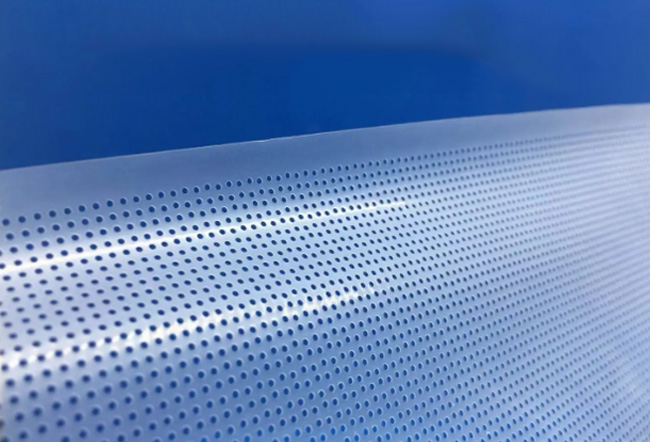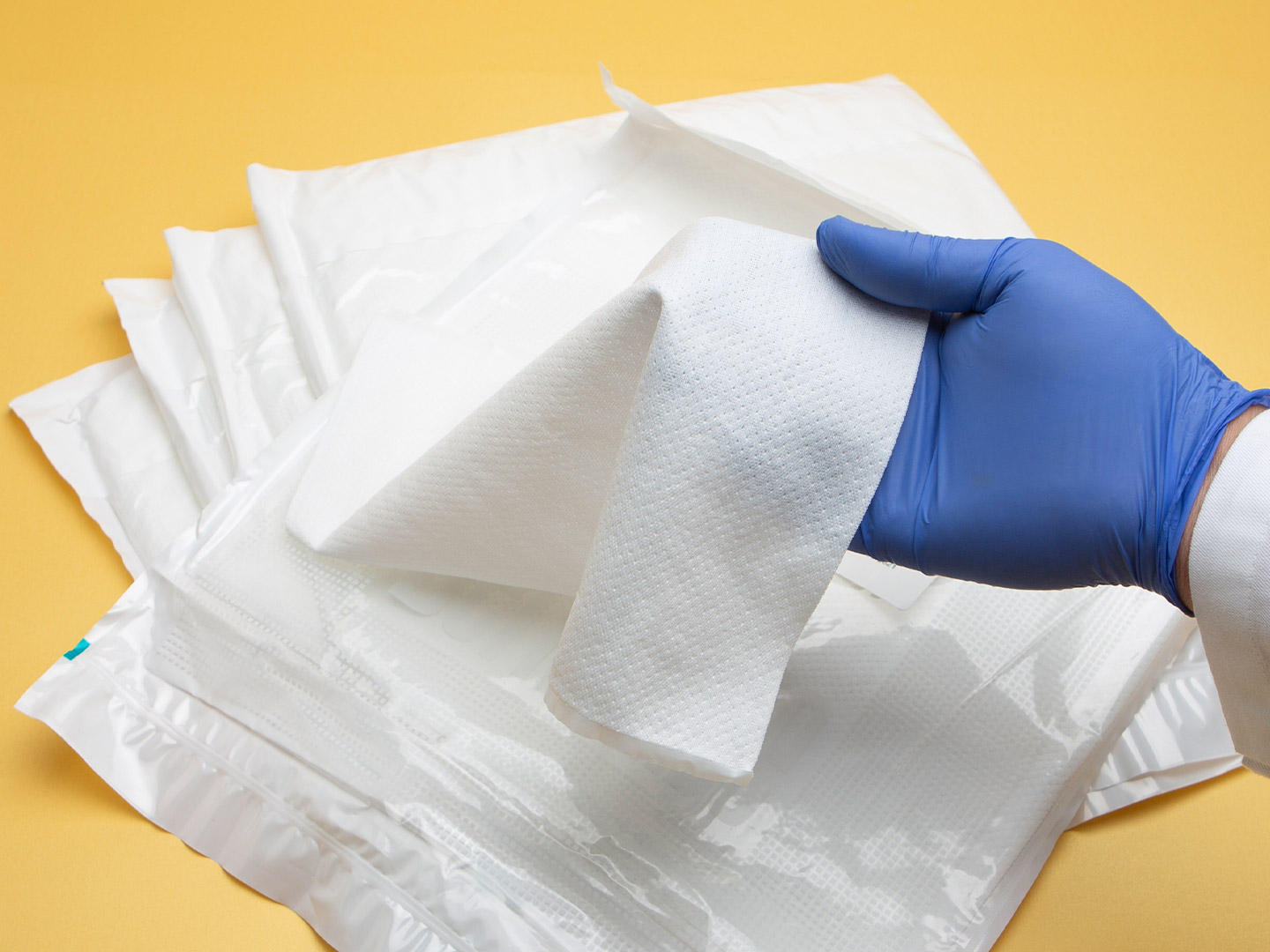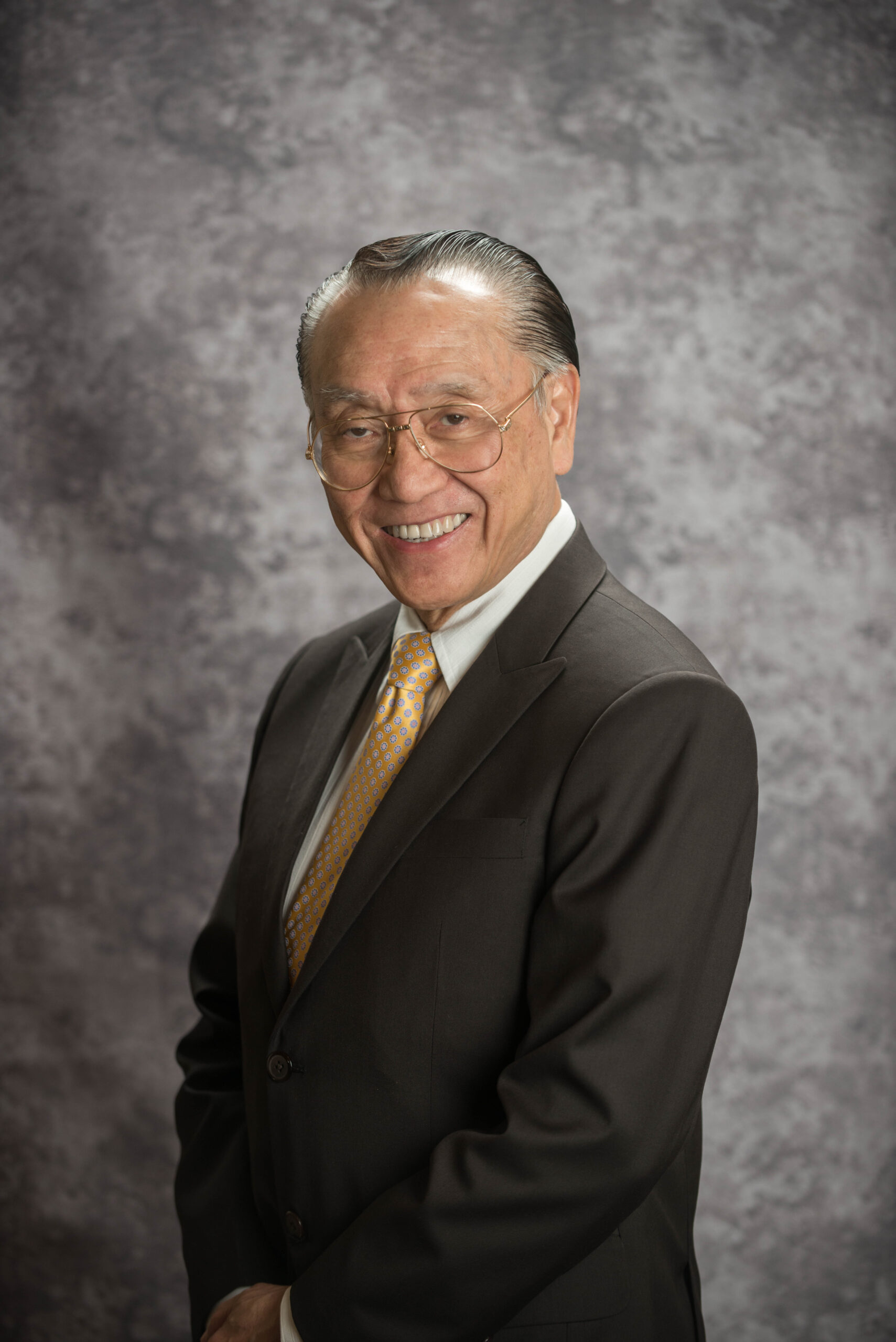|
Fabric name: |
Water soluble fabric |
|
Also called |
Non-woven embroidery fabric |
|
Water soluble fiber solubility: |
Dissolve in room temperature water or cold water within 5 minutes |
|
Ingredients: |
Polyvinyl alcohol fiber (PVA fiber) |
|
Production method: |
Dry webbing, solvent bonding method |
|
Features: |
High yield, low cost, wide application |
|
Applications: |
Water soluble nonwoven bags, embroidery water soluble backing, medical supplies, decorative embroidery, packaging materials, towels and bath towels, paper industry and industrial supplies |
Water-soluble fabric refers to the fabric that can dissolve in water or slowly hydrolyze into water-soluble molecules (or compounds) in water, which is a valuable functional differentiated fabric. With the increasing awareness of people's environmental protection, the application of non-toxic, non-polluting, and hydrolyzable water-soluble fabrics has been gradually popularized, and the research and development of such fabrics have also been deepened, and its application is very extensive.

Water-soluble fabric, also known as non-woven embroidery fabric, is a material that melts when it meets water. Water-soluble fabric refers to the water-soluble PVA staple fiber as the main raw material. It is a new type of material that can be dissolved in water at room temperature and is a new type of water-soluble functional nonwoven fabric. It is a new type of water-soluble functional nonwoven fabric.
It is mainly used as the backing material for embroidery and also used for making decorative paper flowers. The existing water-soluble fabric is of low quality, its strength is poor and it is easy to be torn off, so the products made of existing water-soluble fabric are not used for a long time. At the same time, the existing water soluble fabric production and processing production process steps are complicated and the production cost is high.
The current production of polyvinyl alcohol is polyvinyl acetate in the role of methanol or sodium hydroxide alcoholysis reaction and obtained. PVA fiber is divided into high alkali alcoholysis and low alkali alcoholysis of two different production processes.
The polyvinyl acetate methanol solution used for alcoholysis is preheated to 45 a 48°C and then sent to the mixer by pump with 350 g/L aqueous sodium hydroxide. After thorough mixing, it is sent into the alcoholysis machine. After alcoholysis, lumpy polyvinyl alcohol is generated, which is then crushed and extruded to separate polyvinyl alcohol from the alcoholysis residue. The resulting solid material is further crushed and dried to obtain the desired polyvinyl alcohol. The residue from the press and the steam from the dryer are combined and sent to the recovery section to recover methanol and acetic acid.
The process is similar to the high alkali alcoholysis method. The methanol solution of polyvinyl acetate preheated at 40~45℃ and the methanol solution of sodium hydroxide are pumped to the mixer respectively. The mixed material is sent to the conveyor belt of the belt alcoholysis machine. The alcoholysis reaction is completed after a certain period of time at resting state. The lump of polyvinyl alcohol is then dropped from the end of the belt machine, crushed, and put into the washing kettle to be washed with the methanol solution that removes sodium acetate. Then it is put into the intermediate tank and then sent to the separator for continuous solid-liquid phase separation. The resulting solid is dried to the desired polyvinyl alcohol and the residual liquid is sent for recycling.
Environmental protection cold water soluble non-woven bags is a green product, tough and durable, beautiful shape, good breathability, can be used repeatedly. From the release of plastic restrictions, plastic bags will begin to gradually withdraw from the packaging market of goods, replaced by the ability to repeatedly use on the cold water soluble non-woven shopping bags.
Water-soluble cotton raw material is PVA fiber, which is specially developed for three-dimensional embroidery. It is the ideal lining material for stereoscopic embroidery, 3mm thick, dissolves in room temperature water without leaving residue, and environmental protection products. The traditional paper liner can not meet the high-end product development of three-dimensional embroidery, while water-soluble cotton is made of imported raw materials, which can be dissolved by tap water at room temperature and can solve the problem of dissolution and environmental protection.
| The following are the detailed parameters about high temperature, medium temperature, low temperature and normal temperature water soluble cloth. | ||||
| Type/parameters | High temperature environmental protection water-soluble fabric | Medium temperature water-soluble fabric | Low temperature water soluble fabric | Normal temperature water soluble fabric |
| Dissolution temperature | 95℃~100℃ | S8, 85℃~95℃ S7, 75℃~85℃ |
35℃~40℃ | 20℃~35℃ |
| Application examples | Monochrome embroidered base cloth; Medical wipes; Industrial wipes |
Color embroidery base cloth; Medical wipes; Industrial wipes. |
Fine colored embroidery base cloths; Metallic colored embroidered base cloth; Agricultural pesticide pellet sachet material; Household soap powder sachet material. |
Especially suitable for embroidery substrates for badges that require a three-dimensional look; Fine colored embroidery base fabric; Metallic embroidery base fabric. |
| Product specifications | Weight: 25g/m^2 ~60g/m^2 Width: 50CM- |
Weight: 25g/m^2 ~40g/m^2 Width: 50CM-320CM Weight: 25g/m^2 ~50g/m^2 Width: 50CM-320CM |
Weight: 25g/m^2 -100g/m^2 Width: 50CM-180CM |
Thickness:1.6mm~2.8mm Weight: 25g/m^2 -300g/m^2 Width: 50CM-180CM |
It can be rapidly denatured, decomposed, and degraded into low molecular compounds by itself through the action of natural factors, and has the effect of improving the land. It has been recognized by environmental departments in Europe, America, Japan, and other countries. Because of its environmental protection properties, it has been widely valued by developed countries around the world.
It is mainly a reagent that keeps polymer plastic, rubber, and synthetic fiber stable and prevents its decomposition and aging. It is perfect for embroidery, letter combinations, quilting, lace work, buttonholes, applique, etc. It is easy to use and suitable for any project.
Role of water-soluble stabilizers.
The role of stabilizers is to increase the stability of solutions, colloids, solids, and mixtures, which can slow down the reaction, maintain chemical equilibrium, reduce surface tension, prevent photothermal decomposition or oxidative decomposition, etc... Broadly speaking, chemical stabilizers come from a wide range of sources, mainly according to the design purpose of the formula designer, can be flexible to use any chemical to achieve product quality and stability.
The first method is to submerge the item in warm water for 2-3 minutes while rubbing the stabilizer to dissolve it. The second method is to rinse the item under running water at an angle and then wipe the area of stabilizer residue again.
Water-soluble stabilizers are embroidery backings that dissolve 100% in water and disappear. Water soluble backing has a film type heavy plastic and a fabric like stabilizer.
The above is the introduction of water-soluble fabrics to you, and we will introduce various fabrics-related details to you every day. Of course, GF& also provides all kinds of fabric wholesale and logistics services, friends with demand can come to contact us to consult the specific style and price of the fabric.
All Rights Reserved: https://www.groupgf.com/info-detail/water-soluble-fabric
Copyright Notice: This is an original (translated) article from G&F Group Inc., please indicate the source from G&F Group Inc.. If there is any infringement, please contact us first.
 Nonwovens in daily life ----- automotive
Nonwovens in daily life ----- automotive
 What is SAP – superabsorbent polymers
What is SAP – superabsorbent polymers
 The Future of Global Nonwoven Wipes to 2029
The Future of Global Nonwoven Wipes to 2029
 C.K. Wong, Nonwovens Industry Pioneer, Passes Away in Hong Kong
C.K. Wong, Nonwovens Industry Pioneer, Passes Away in Hong Kong